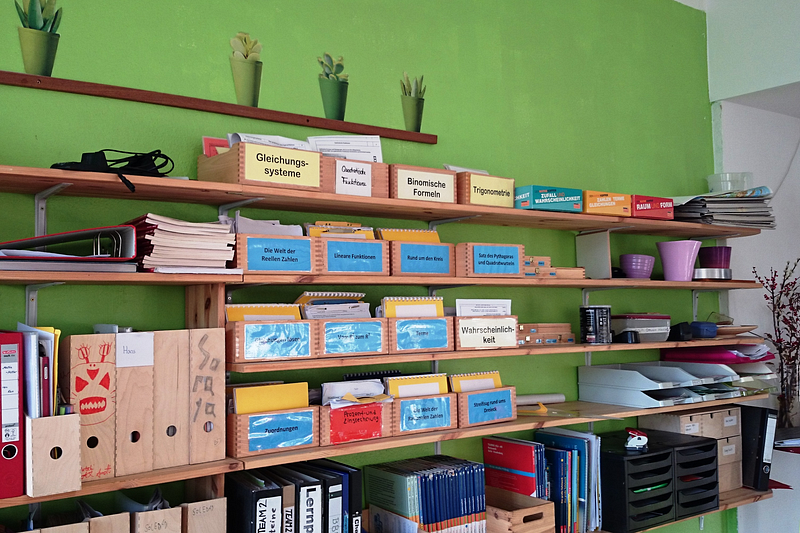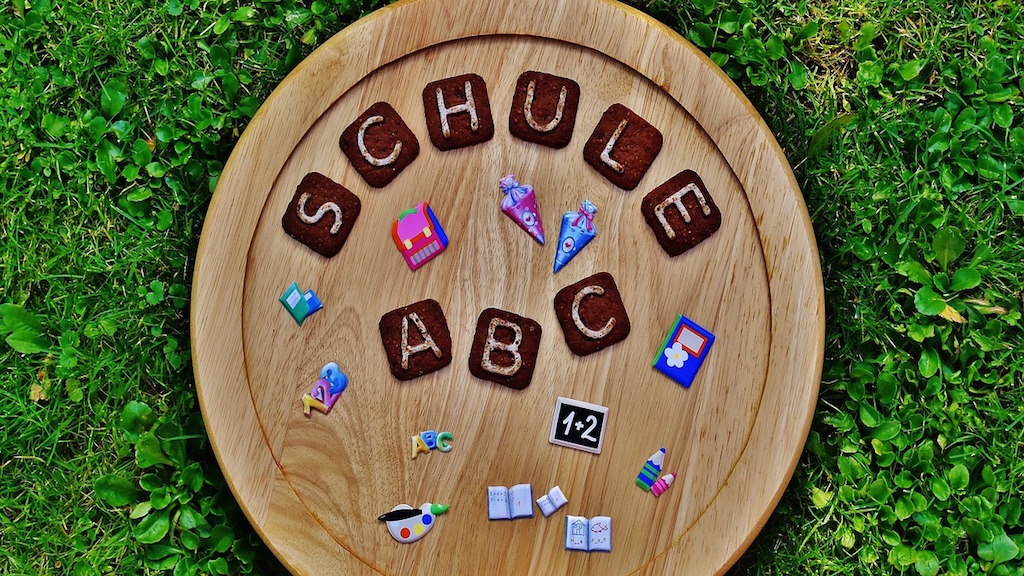By Lisa Gill, originally published in Medium
I first came across The Evangelical School Berlin Centre (ESBC) in Frederic Laloux’s book Reinventing Organisations. It opened in 2007 under the guidance of director Margret Rasfeld and today, with some 1,500 students, it has become internationally recognised for its innovative curriculum and organisational model.
Last week I had the chance to visit ESBC on one of its Open Days. I sat down with one of the teachers, Christian Hausner, to learn more about self-management as both a cornerstone of how students learn and how staff work together.
After navigating corridors swarming with parents and students volunteering as tour guides, I found Christian’s classroom where a few parents had gathered to learn about student projects at ESBC. Three of Christian’s students stood at the front and talked about the project process (more about that later). I was amazed by how adult they seemed for 12 to 14-year-olds. Not reluctant or coerced or shy, but happy to talk about their experience of the school. After show and tell was over, Christian and I sat in the corner chatting and when the occasional lost parent would wonder in, a student — without prompting — would come to their aid. Christian nodded proudly in their direction, “they’ve got it under control.” He began to describe two aspects of ESBC that make it unique: their innovative learning design and the how the staff members work as a team.
1. The learning design
ESBC is an ‘agenda school’ which means the curriculum is designed around the UN’s Global Goals for Sustainable Development. The aim of their curriculum is to support children in learning to gain knowledge, act, live together, and be.

Every morning students have a 90-minute block comprised of four subjects: maths, German, English and social studies. These blocks are referred to as ‘Learning Spaces’, where students self-manage their learning by selecting a predesigned unit from a subject of their choice, for example ‘Equations’. Each class contains 26 students of mixed ages and two teachers. However the main twist is that teachers no longer act as experts or offer input, their role is more to manage the space and keep time. If a student gets stuck, they must ask two fellow students first to try and find the answer before asking a teacher.

All teachers and students are trained in Nonviolent Communication and once a week there is a ‘Class Council’ in which people can discuss and deal with tensions in the group. Students take on different roles and moderate each other. The school also has a weekly gathering which includes a round of praise (where anyone can get up on stage and praise someone else), a round of ‘speak your mind’, and ‘people with a message’ (where they invite an external person of interest to speak — most recently it was Raúl Krauthausen, founder of Sozialhelden and creator of Wheelmap.org).
On Thursdays students work on their projects — they are required to produce three each year — that focus on one of the global goals. They follow a project process similar to Design Thinking with the following steps: inspiration, observation, analysis, imagination, presentation, and implementation. In Christian’s class, they’re exploring discrimination and Berlin identity so students are currently interviewing people from all walks of life to empathise with them and gain insights in order to develop a sustainable solution for their community.
At the end of the week, students go through their log books with their teachers. The log book is an essential component of the children’s learning experience. Each week, students set a goal for themselves and day by day, they fill in what they have been doing (and crucially what they have learnt) in their Learning Spaces, subjects, and projects. In the top right-hand corner of the page is a box where they complete the sentence ‘I am proud of…’. Their teachers sign the page and there is a column for parents to add their thoughts and feedback (positive and negative) as well.
There are no grades until the ninth grade and yet the school performs extremely well in Germany, particularly in German and English. Similarly, in Finland (a country whose education system is regularly praised in the news and on social media) it’s not mandatory to give students grades until the eighth grade. More and more, we are seeing evidence that putting pressure on children and testing them relentlessly (in the UK, for example) is harming both their performance and their mental well-being.
2. Working as a team
It’s not just the curriculum that’s innovative. The staff at ESBC have developed unique, more collaborative ways of working together as well. I asked Christian what skills were necessary to be able to teach and work in this way and he said the key factor was self-management. Things change quickly in this learning environment and you have to be able to improvise. And of course every student has different learning needs. Some, for example, need more structure than the system provides. “We try to be spontaneous,” Christian told me. One child was really struggling and ended up taking a year out of school to hike around Portugal. Now he’s returned to school and is back on track. “It’s about flexibility.”
Another important skill for teachers and colleagues is self-awareness. Although self-management is important, the staff also recognise that they must work as a team to be successful. Unlike in many schools where there is a “closed classroom door” culture, at ESBC teachers are encouraged to sit in each other’s lessons and give feedback — something Christian says is absolutely essential to not feeling alone and working together. (See also this blog I wrote which references Professor Qing Gu’s research on the impact of of social connection on teacher resilience.)
Teachers also have to collaborate to work out the units together and design the material. As well as Nonviolent Communication training, staff have also trained in Team of Teams, and most recently The Art of Hosting in order to host more effective, mindful meetings and conversations.
Christian explained it can be difficult as a teacher not to “teach from the front” but the system (of children choosing their own units in Learning Spaces, for example) helps them avoid the temptation to become lecturers. He believes this change — from teacher as expert to teacher as facilitator (my word) — is the paradigm shift we need in the world.
Preparing children for the challenges of the 21st century
As I walked around the halls of the school, something felt different. There was schoolwork pinned up outside classrooms in a familiar fashion but here it seemed more authentic, more real — it didn’t just belong to the child with the neatest handwriting and everyone had created something unique rather than just paint by numbers learning. In one of the stairwells, the wall had been painted with complete abandon and it was a messy explosion of colour but there was something expressive and utterly joyful about it. The joy of learning was present everywhere you looked.
Ultimately, ESBC is designed to create the learning and working cultures we need to address the challenges of the 21st century. Children who go to ESBC develop stronger self-awareness, resilience, and the ability to manage complexity— all skills we so desperately need in today’s organisations, communities, and society at large. Even before these children leave school, they are having an enormous impact on their families, social networks and communities. Imagine, I thought to myself as I left the grounds, the impact they will have on the world when they finally graduate…
Permission to republish granted by the author.
Featured Image/Graphic link added by Enlivening Edge Magazine.





Reading this great article on how else education can work and turn out to be more effective, satisfying to everyone involved and also safe time which would be otherwise spent on preparing for testing, marking … made me think of the parallels with healthcare. There is now more and more acknowledgement how healthcare needs to change from being prescriptive and symptom focused to engaging the patient in life style changes and connect him/her to more of themselves, their community and the world we live in.
Lisa do you know Jean-Paul Munsch who is also involved with education and TEAL? http://integraleuropeanconference.com/2016/07/27/emergence-for-teal-education-iec-report/
You may like to connect with him if you dont know him already.
You may also find others to connect with by following this link: https://enliveningedge.org/tag/education/